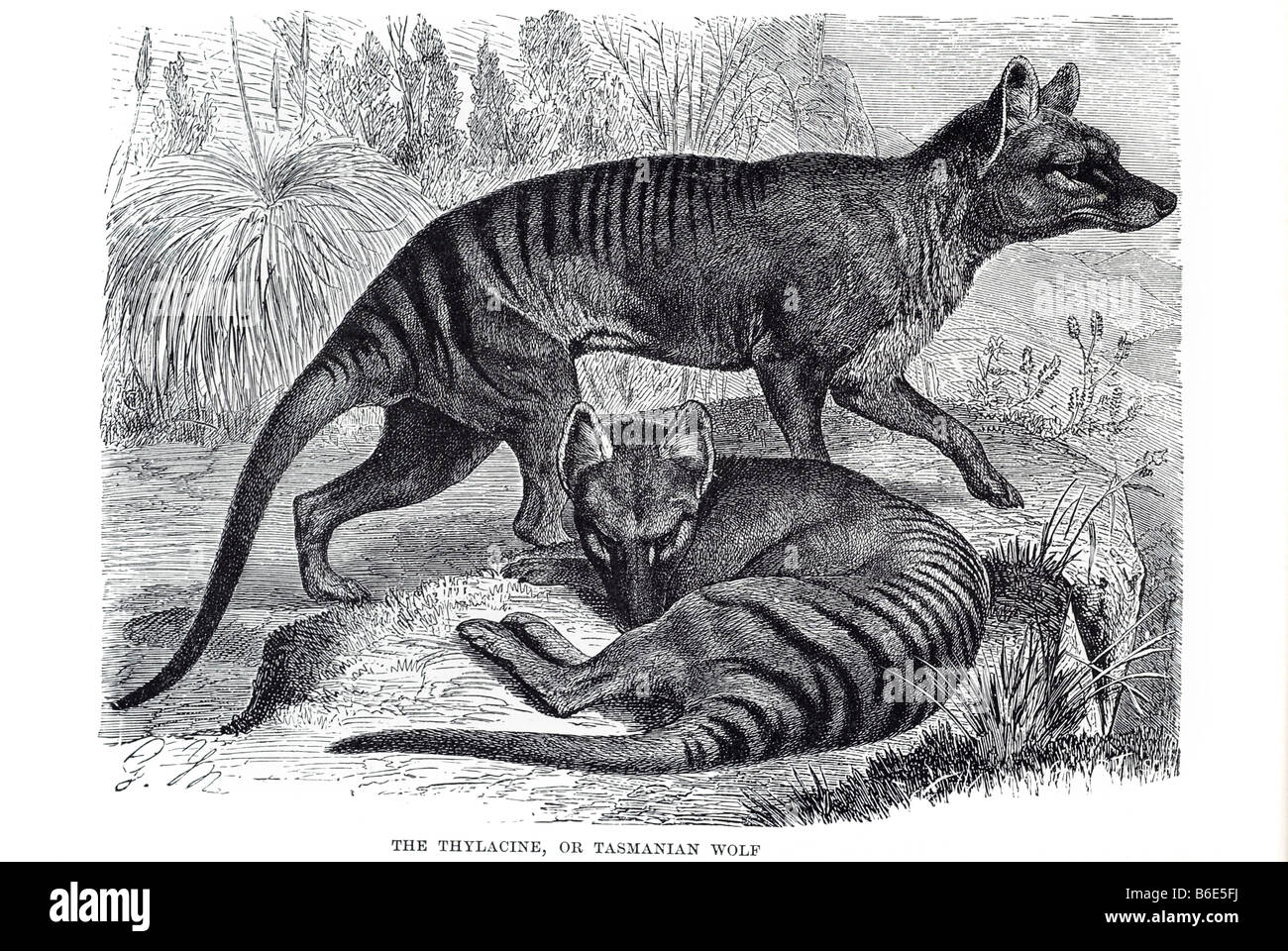thylacine or tasmanian wolf dog-headed pouched largest carnivorous marsupial modern times. Native to continental Australia, Tas

Image details
Contributor:
19th era / Alamy Stock PhotoImage ID:
B6E5FJFile size:
48.3 MB (3.2 MB Compressed download)Releases:
Model - no | Property - noDo I need a release?Dimensions:
5025 x 3363 px | 42.5 x 28.5 cm | 16.8 x 11.2 inches | 300dpiMore information:
dog-headed pouched largest carnivorous marsupial modern times. Native to continental Australia, Tasmania and New Guinea, it is thought to have become extinct in the 20th century. It is commonly known as the Tasmanian Tiger (because of its striped back), the Tasmanian Wolf, and colloquially the Tassie (or Tazzy) Tiger or simply the Tiger. It was the last extant member of its genus, Thylacinus, although several related species have been found in the fossil record dating back to the early Miocene. The Thylacine became extinct on the Australian mainland thousands of years before European settlement of the continent, but it survived on the island of Tasmania along with several endemic species, including the Tasmanian Devil. Intensive hunting encouraged by bounties is generally blamed for its extinction, but other contributory factors may have been disease, the introduction of dogs, and human encroachment into its habitat. Despite it being officially classified as extinct, sightings are still reported. Like the tigers and wolves of the Northern Hemisphere, from which it obtained two of its common names, the Thylacine was an apex predator. As a marsupial, it was not related to these placental mammals, but because of convergent evolution it displayed the same general form and adaptations. Its closest living relative is thought to be either the Tasmanian Devil or Numbat. The Thylacine was one of only two marsupials to have a pouch in both sexes (the other is the Water Opossum). The male Thylacine had a pouch that acted as a protective sheath, protecting the male's external reproductive organs while running through thick brush.